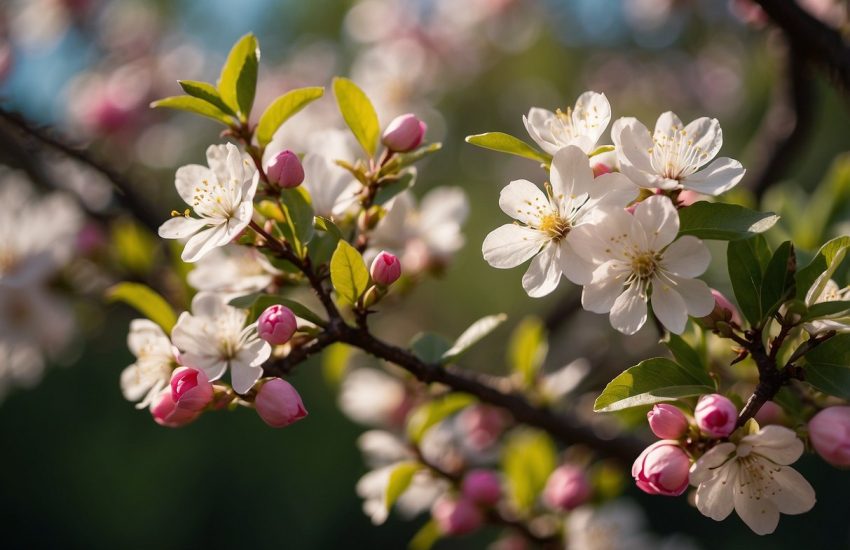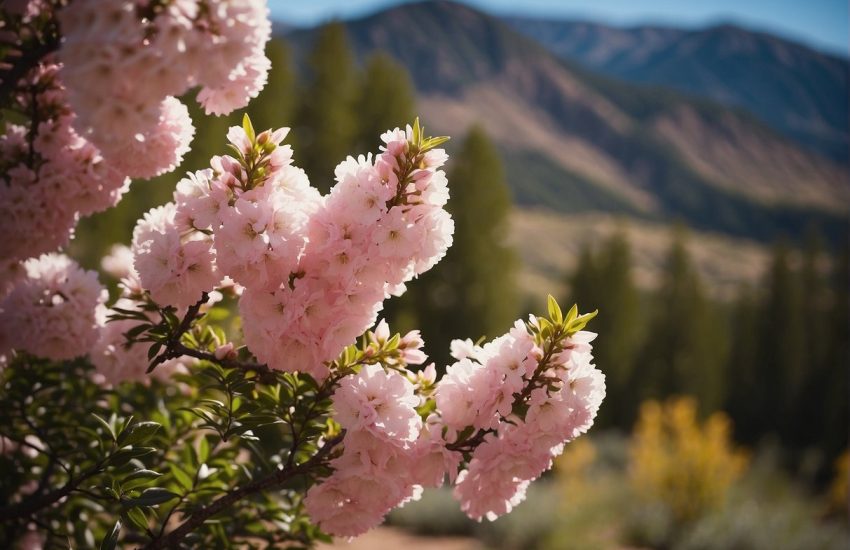Flowering Trees in the Pacific Northwest: A Guide to the Best Varieties for Your Garden
The Pacific Northwest is home to a diverse range of flowering trees that can add beauty and color to any landscape. From the delicate pink blossoms of the cherry tree to the vibrant yellow blooms of the goldenchain tree, there are many options to choose from when it comes to selecting the perfect flowering tree for your yard.

Many of the flowering trees found in the Pacific Northwest are native species, meaning they are well-suited to the region’s climate and soil conditions. These trees also provide important habitat and food sources for local wildlife, making them a valuable addition to any ecosystem. For those looking to support local biodiversity, choosing native species can be an excellent option.
If you’re considering adding a flowering tree to your yard, it’s important to work with a reputable landscaping contractor who can help you select the right tree for your space and ensure it is planted and cared for properly. With the right guidance and expertise, you can enjoy the beauty and benefits of a flowering tree for years to come.
Native Flowering Trees of the Pacific Northwest
The Pacific Northwest is home to a variety of native flowering trees that add beauty and color to the landscape. In this section, we will explore the significance of native trees, popular native flowering trees, and the conservation of native flora.
Significance of Native Trees
Native trees are an important part of the Pacific Northwest ecosystem. They provide habitat and food for wildlife, help prevent erosion, and contribute to the overall health of the environment. They also have cultural significance for many indigenous communities in the region.
Popular Native Flowering Trees
One of the most iconic native flowering trees in the Pacific Northwest is the Pacific dogwood (Cornus nuttallii). This tree produces showy white or pink flowers in the spring and has distinctive green leaves that turn red in the fall. Another popular native flowering tree is the white dogwood (Cornus florida), which has white blooms and is commonly found in Oregon and Washington State.
Conservation of Native Flora
Conservation of native flora is important to maintain the biodiversity and health of the Pacific Northwest ecosystem. The Douglas fir (Pseudotsuga menziesii), a native conifer tree, is an important species for conservation efforts. It provides habitat for a variety of wildlife and is a source of timber for the region’s economy.
In conclusion, native flowering trees are an important part of the Pacific Northwest landscape. They provide beauty, habitat, and cultural significance to the region. Conservation efforts are necessary to ensure the health and biodiversity of the ecosystem for future generations.
Cultivation and Care

Planting and Growth Conditions
When it comes to planting and growing flowering trees in the Pacific Northwest, it is important to consider the specific needs of each species. Some species, such as the Dogwood, prefer partial shade, while others, like the Cherry Blossom, require full sun. It is also important to ensure that the soil is well-draining and rich in nutrients. If the soil is poor, it may be necessary to amend it with compost or other organic matter.
In terms of watering, it is important to keep the soil consistently moist, but not waterlogged. During periods of drought, it may be necessary to water the trees more frequently. Mulching around the base of the tree can also help to retain moisture and regulate soil temperature.
Disease Management
Flowering trees in the Pacific Northwest are susceptible to a variety of diseases, including powdery mildew. To prevent the spread of disease, it is important to maintain good air circulation around the trees and avoid overhead watering. If a tree does become infected, it may be necessary to prune infected branches and treat the tree with a fungicide.
Landscaping with Flowering Trees
Flowering trees can add beauty and interest to any landscape. They can be used as focal points or planted in groups to create a stunning display. When landscaping with flowering trees, it is important to consider the size and shape of the tree at maturity, as well as its growth habit. Some species, such as the Japanese Maple, are well-suited for use as a hedge or border, while others, like the Magnolia, are best used as a specimen tree.
In addition to their aesthetic value, flowering trees also provide important habitat and food sources for pollinators such as bees and butterflies. When selecting species to plant, it is important to consider their value to local wildlife.
Overall, with proper care and attention, flowering trees can thrive in the Pacific Northwest and provide years of beauty and enjoyment.
Ecological Impact and Wildlife Support

Trees as Habitats for Birds and Squirrels
Flowering trees in the Pacific Northwest region provide important habitats for birds and squirrels. The dense foliage of the trees provides shelter and nesting sites for various bird species such as chickadees, jays, and warblers. The trees also provide a habitat for squirrels, which can nest in tree cavities or build their nests in the branches.
In addition to providing shelter, flowering trees also play a crucial role in supporting the ecosystem by providing food and shelter for insects, which in turn serve as food for birds and other animals. The trees also help to maintain the balance of the ecosystem by providing a habitat for predators such as hawks and owls, which help to control the populations of rodents and other small mammals.
Flowering Trees as Food Sources
Flowering trees in the Pacific Northwest region are an important source of food for a variety of wildlife species. The nectar and pollen produced by the flowers provide a valuable food source for bees, butterflies, and other pollinators. The trees also produce fruits and seeds, which provide a food source for birds and other animals.
The flowering trees also support the growth of understory trees and grasses, which provide additional food and habitat for a variety of wildlife species. The trees also help to maintain the health of the forest ecosystem by providing nutrients to the soil and preventing erosion.
In conclusion, flowering trees in the Pacific Northwest region play an important role in supporting the ecosystem and providing habitats and food sources for a variety of wildlife species. It is important to protect these trees and the forest ecosystem in order to maintain the health and balance of the region’s natural environment.


